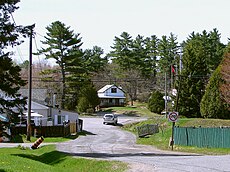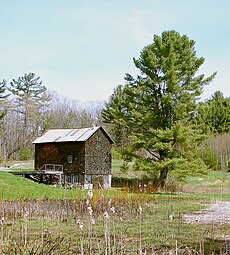
Cordite is a family of smokeless propellants developed and produced in Britain since 1889 to replace black powder as a military firearm propellant. Like modern gunpowder, cordite is classified as a low explosive because of its slow burning rates and consequently low brisance. These produce a subsonic deflagration wave rather than the supersonic detonation wave produced by brisants, or high explosives. The hot gases produced by burning gunpowder or cordite generate sufficient pressure to propel a bullet or shell to its target, but not so quickly as to routinely destroy the barrel of the gun.

The Avro Canada CF-105 Arrow was a delta-winged interceptor aircraft designed and built by Avro Canada. The CF-105 held the promise of Mach 2 speeds at altitudes exceeding 50,000 feet (15,000 m) and was intended to serve as the Royal Canadian Air Force's (RCAF) primary interceptor into the 1960s and beyond.
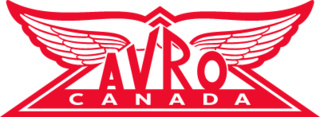
Avro Canada was a Canadian aircraft manufacturing company. It was founded in 1945 as an aircraft plant and within 13 years became the third-largest company in Canada, one of the largest 100 companies in the world, and directly employing over 50,000. Avro Canada was best known for the CF-105 Arrow, but through growth and acquisition, it rapidly became a major, integrated company that had diverse holdings.

The Avro Canada C102 Jetliner was a Canadian prototype medium-range turbojet-powered jet airliner built by Avro Canada in 1949. It was beaten to the air by only 13 days by the de Havilland Comet, thereby becoming the second purpose-built jet airliner in the world, while both were preceded by the Nene Lancastrian, and the Nene Viking, both of which were conversions of piston engine airliners. The name "Jetliner" was chosen as a shortening of the term "jet airliner", a term which is still in popular usage. The aircraft was considered suitable for busy routes along the US eastern seaboard and garnered intense interest, notably from Howard Hughes who even offered to start production under license. However, continued delays in Avro Canada's all-weather interceptor project, the CF-100 Canuck, led to an order to stop working on the project in 1951, with the prototype Jetliner later cut up for scrap.

Parry Sound is a town in Ontario, Canada, located on the eastern shore of the sound after which it is named. Parry Sound is located 160 km (99 mi) south of Sudbury and 225 km (140 mi) north of Toronto. It is a single-tier government located in the territorial District of Parry Sound, which has no second-tier county, regional, or district level of government. Parry Sound is a popular cottage country region for Southern Ontario residents. It also has the world's deepest natural freshwater port.
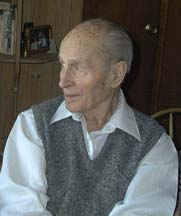
Janusz Żurakowski was a Polish fighter and test pilot. At various times in his life he lived and worked in Poland, the United Kingdom, and Canada.

The Avro 504 is a single-engine biplane bomber made by the Avro aircraft company and under licence by others. Production during World War I totalled 8,970 and continued for almost 20 years, making it the most-produced aircraft of any kind that served in any military capacity during the First World War. More than 10,000 were built from 1913 until production ended in 1932.

The Avro Canada CF-100 Canuck is a Canadian twinjet interceptor/fighter designed and produced by aircraft manufacturer Avro Canada. It has the distinction of being the only Canadian-designed fighter to enter mass production.
King's Highway 69, commonly referred to as Highway 69, is a provincially maintained north–south highway in the central portion of the Canadian province of Ontario. In conjunction with Highway 400, it links Toronto with the city of Greater Sudbury at Highway 17, via Parry Sound. It is part of the Trans-Canada Highway and the National Highway System. From its southern terminus of Highway 559 at Carling, Highway 69 begins as Highway 400 narrows from a four-laned freeway to a two lane highway. It travels northerly for approximately 68 kilometres (42 mi) to south of the French River before widening back to a divided four lane freeway for approximately 64 kilometres (40 mi) into Sudbury. The final 6 kilometres (3.7 mi) of the route, connecting to Highway 17, is a five lane arterial road that will be converted to freeway as the final phase of the four-laning.

Crawford Gordon Jr. was a leader of wartime defence production in Canada under Minister of Munitions and Supply C.D. Howe during the Second World War. He was perhaps one of the greatest industrialists and business minds in Canadian history; Gordon bought two companies and held one CEO position, but eventually lost it all.

A filling factory was a manufacturing plant that specialised in filling various munitions, such as bombs, shells, cartridges, pyrotechnics, and screening smokes. In the United Kingdom, during both world wars of the 20th century, the majority of the employees were women.
Canadian Industries Limited, also known as C-I-L, is a Canadian chemicals manufacturer. Products include paints, fertilizers and pesticides, and explosives. It was formed in 1910 by the merger of five Canadian explosives companies. It was until recently a subsidiary of Imperial Chemical Industries until ICI was purchased by AkzoNobel.

The Canadair Sabre is a jet fighter aircraft built by Canadair under licence from North American Aviation. A variant of the North American F-86 Sabre, it was produced until 1958 and used primarily by the Royal Canadian Air Force (RCAF) until replaced with the Canadair CF-104 in 1962. Several other air forces also operated the aircraft.
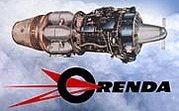
Orenda Engines was a Canadian aircraft engine manufacturer and parts supplier. As part of the earlier Avro Canada conglomerate, which became Hawker Siddeley Canada, they produced a number of military jet engines from the 1950s through the 1970s, and were Canada's primary engine supplier and repair company.

The Imperial Munitions Board (IMB) was the Canadian branch of the British Ministry of Munitions, set up in Canada under the chairmanship of Joseph Wesley Flavelle. It was formed by the British War Cabinet to alleviate the Shell Crisis of 1915 during the First World War. The Board was mandated to arrange for the manufacture of war materials in Canada on behalf of the British government.
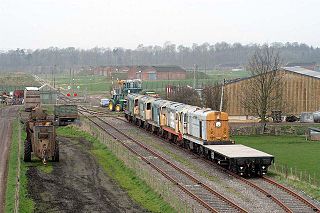
H. M. Factory, Gretna was Britain's largest cordite factory in World War I. The government-owned facility was adjacent to the Solway Firth, near Gretna, Dumfries and Galloway. It was built by the Ministry of Munitions in response to the Shell Crisis of 1915. The capital cost was £9,184,000 and it covered 9,000 acres (3,600 ha). The cost of working it from September 1916 to September 1918 was £12,769,000, during which time it produced cordite valued at £15,000,000, though it was claimed that without it the cordite would have had to be imported from the USA at a cost of £23,600,000.

The Orenda PS.13 Iroquois was an advanced turbojet engine designed for military use. It was developed by the Canadian aircraft engine manufacturer Orenda Engines, a part of the Avro Canada group. Intended for the CF-105 Arrow interceptor, development was cancelled, along with the Arrow, in 1959.
Frederick Thomas Smye was a Canadian businessman. He was the president of Avro Aircraft Limited (Canada).

The Avro Canada TR5 Orenda was the first production jet engine from Avro Canada's Gas Turbine Division. Similar to other early jet engines in design, like the Rolls-Royce Avon or General Electric J47.
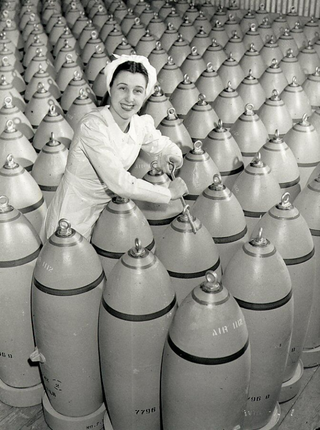
Defence Industries Limited (DIL) was a subsidiary of Canadian Industries Limited (C-I-L), founded in 1939 to manufacture munitions for use in World War II. The company operated in number of locations in Canada, in the provinces of Ontario, Quebec, and Manitoba. Its Pickering Works shell-filling plant, along with nearby housing, grew into the town of Ajax.
